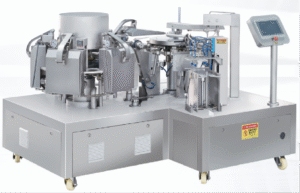Is Food Packaging a Good Business?
Table of Contents
The food packaging industry has emerged as one of the most resilient and profitable sectors in the global economy. With the increasing demand for processed foods, convenience products, and e-commerce deliveries, entrepreneurs and investors are asking themselves: is food packaging truly a good business opportunity? The answer, backed by market data and industry trends, is a resounding yes, but success requires understanding the nuances of this dynamic industry.
Market Overview and Growth Potential
The global food packaging market is experiencing remarkable growth, valued at over $300 billion and projected to continue expanding at a compound annual growth rate of approximately 5-6% through the next decade. This growth is driven by several compelling factors that make food packaging an attractive business venture.
Consumer behavior has fundamentally shifted toward convenience, with ready-to-eat meals, online grocery shopping, and food delivery services becoming the norm rather than the exception. This transformation has created an insatiable demand for innovative packaging solutions that preserve freshness, ensure safety, and provide convenience. Additionally, the rise of middle-class populations in emerging markets has significantly expanded the customer base for packaged food products.
The industry benefits from being recession-resistant, as people continue to eat regardless of economic conditions. While consumers may shift their preferences during downturns, the fundamental need for food packaging remains constant, providing business owners with a stable revenue foundation.

Profit Margins and Revenue Streams
Food packaging businesses typically enjoy healthy profit margins, ranging from 10% to 30% depending on the specific niche, scale of operations, and efficiency of production processes. Custom packaging solutions and specialized materials often command premium pricing, allowing businesses to achieve higher margins.
The revenue model in food packaging is particularly attractive because it operates on a recurring basis. Food manufacturers require continuous supplies of packaging materials, creating predictable cash flows and long-term client relationships. Once you establish contracts with food producers, restaurants, or retailers, you secure steady orders that can span years.
Diversification opportunities abound in this sector. Businesses can serve multiple market segments simultaneously, from small artisanal food producers to large-scale manufacturers, from fresh produce packers to frozen food companies. This diversity helps mitigate risk and stabilize income streams.
Investment Requirements and Equipment
Starting a food packaging business requires careful consideration of initial capital investment. The investment scale varies widely depending on your chosen niche and business model. Small-scale operations focusing on manual or semi-automated processes might start with $50,000 to $200,000, while fully automated facilities can require investments exceeding several million dollars.
The cornerstone of any food packaging operation is the packing machine for food products. These machines range from basic filling and sealing equipment to sophisticated automated systems that handle multiple packaging formats. Modern packing machines offer versatility, allowing businesses to package various food types including liquids, powders, solids, and semi-solids.
Investing in quality packing machine for food products pays dividends through increased efficiency, reduced labor costs, and improved consistency. Advanced machines can achieve speeds of hundreds or thousands of packages per hour while maintaining precise portion control and minimal waste. When selecting equipment, consider factors such as production capacity, flexibility to handle different package sizes, ease of cleaning, and compliance with food safety standards.
Beyond machinery, investments must cover facility costs, including space that meets food safety regulations, climate control systems, quality control equipment, and inventory management systems. Raw materials such as plastic films, paperboard, aluminum foil, or biodegradable materials represent ongoing operational expenses that require working capital.
Challenges in the Food Packaging Industry
While food packaging presents significant opportunities, entrepreneurs must navigate several challenges. Regulatory compliance stands at the forefront, as packaging materials must meet stringent food safety standards set by agencies like the FDA, EU regulations, or local authorities. These requirements demand ongoing investment in testing, documentation, and quality assurance processes.
The industry faces increasing pressure regarding environmental sustainability. Consumers and regulators alike are demanding eco-friendly packaging solutions, pushing businesses to invest in biodegradable materials, recyclable options, and reduced packaging waste. This transition requires research and development investment and may impact profit margins in the short term.
Competition in the food packaging sector is intense, with established players holding significant market share. New entrants must differentiate themselves through innovation, superior service, competitive pricing, or niche specialization. Building brand recognition and securing initial clients requires persistent marketing efforts and often necessitates offering favorable terms to break into the market.
Raw material price volatility presents another challenge, as petroleum-based plastics and paper products fluctuate with commodity markets. Successful businesses develop strategies to manage these variations through long-term supplier contracts, inventory management, or passing costs to customers through contractual agreements.
Market Trends and Opportunities
Several emerging trends are reshaping the food packaging landscape, creating new opportunities for innovative businesses. Sustainable packaging has moved from a niche preference to a mainstream requirement. Companies that develop expertise in plant-based plastics, compostable materials, or reusable packaging systems position themselves at the forefront of industry evolution.
Smart packaging technology represents a frontier of innovation, incorporating features such as freshness indicators, temperature monitoring, QR codes for product traceability, and anti-counterfeiting measures. These technologies add value for food manufacturers and consumers while commanding premium pricing.
The explosion of e-commerce and food delivery services has created demand for packaging that withstands shipping stresses while maintaining food quality. Packaging designed specifically for delivery, with features like tamper-evident seals and temperature control, represents a growing market segment.
Personalization and custom packaging have gained traction, particularly among artisanal food producers and premium brands. Small to medium-sized packaging operations can capitalize on this trend by offering flexible, low-minimum-order custom solutions that large manufacturers cannot efficiently provide.

Key Success Factors
Succeeding in the food packaging business requires attention to several critical factors. First, establishing strong relationships with reliable suppliers ensures consistent material quality and favorable pricing. Similarly, building long-term partnerships with clients creates stable revenue streams and provides valuable feedback for continuous improvement.
Investing in modern, efficient packing machine for food products and maintaining equipment properly minimizes downtime and maximizes productivity. Regular maintenance schedules and operator training programs ensure optimal performance and longevity of capital investments.
Quality control cannot be compromised in food packaging. Implementing rigorous testing protocols, maintaining clean facilities, and documenting processes protect your reputation and ensure regulatory compliance. A single quality failure can damage client relationships built over years.
Innovation distinguishes successful packaging businesses from commodity suppliers. Staying informed about industry trends, investing in research and development, and actively seeking customer feedback enable businesses to evolve with market demands and maintain competitive advantages.
Financial management, including careful cash flow monitoring, strategic pricing, and cost control, determines long-term viability. Understanding your cost structure, maintaining appropriate profit margins, and investing wisely in growth opportunities create sustainable business models.
Conclusion
Food packaging is indeed a good business opportunity for entrepreneurs with adequate capital, industry knowledge, and commitment to quality and innovation. The sector offers strong growth prospects, recurring revenue models, and relative economic stability. However, success requires navigating regulatory requirements, managing competition, and adapting to evolving consumer preferences, particularly regarding sustainability.
The initial investment in quality equipment, especially reliable packing machine for food products, combined with strategic planning and operational excellence, can yield substantial returns. As global food consumption patterns continue evolving and packaging requirements become more sophisticated, well-positioned packaging businesses will find ample opportunities for growth and profitability.
For entrepreneurs considering entry into this sector, thorough market research, careful business planning, and possibly starting with a focused niche before expanding can mitigate risks while building expertise. With the right approach, food packaging can provide a lucrative and sustainable business venture in the years ahead.
We are a professional food packaging machine manufacturer. Contact us today to find the perfect packaging solution for your business needs.
